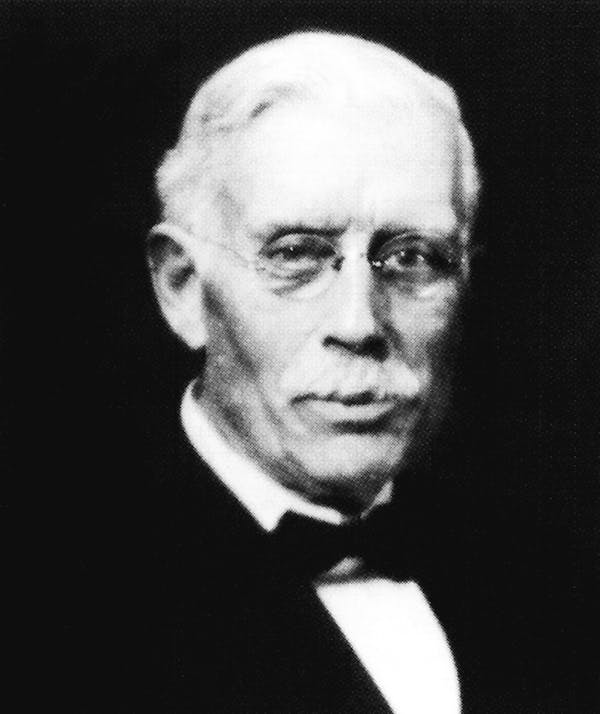
Austin, Samuel
1997 - The Austin Co.
Samuel Austin and his son built Austin Co. into one of the largest construction firms in the United States.
Samuel Austin used his skills as a carpenter and entrepreneur to create a thriving contracting business. What he began in Cleveland's Broadway neighborhood 100 years ago expedited the rapid industrialization of the United States over the next four decades. In partnership with his son, Wilbert, Austin built Austin Co. into one of the largest construction firms in the United States. Their application of modern industrial business concepts such as mass production and standardization to the building business was key to their company's success.
The Austin Method, developed around 1900, promised clients savings in time and money by placing total responsibility for a building project's design, engineering and construction with Austin. Taking a cue from Henry Ford's assembly-line methods for auto production, the method standardized designs and materials. The company created 10 standard building designs and kept essential construction items in inventory, allowing building materials to start arriving at a site almost before the ink had dried on the contract. Austin's primary focus was industrial buildings, though it also applied its method to office buildings and retail stores.
In 1872, carpenter Samuel Austin came to the United States from his native England, lured by the prospect of steady work rebuilding Chicago after its devastating fire the previous year. He stopped in Cleveland to visit an acquaintance, who told Austin that work in his trade was easy to find in Cleveland. Austin decided to stay. He soon landed a job and married his host's daughter, Sarah, in 1874.
When the Panic of 1873 eliminated most of the city's construction jobs, Austin, and later his family, traveled back and forth to England for a couple of years before settling in Cleveland. The carpenter became a contractor, and by 1878, was operating a contracting business at Broadway and Forest Street (later East 37th Street). "Most of the work at that time was house work," he wrote in a privately published memoir. "I would take a contract for a house, place a foreman on the job, haul all of the light material myself. ... All estimating was done in the evening."
Austin moved beyond residential contracting into commercial work, constructing buildings for the Schaffer Training School, the Broadway Bank at East 55th Street and the Buckeye Electric Co. (later absorbed by General Electric Co).
Eventually, Austin's son, Wilbert, an 1899 engineering graduate of Case Institute of Applied Science (now Case Western Reserve University), joined his father's business. Wilbert's skills enabled the company to offer engineering and related design services.
In the early 20th century, the company, renamed Samuel Austin & Son Co., built factories for the many electric-light plants cropping up in Cleveland and elsewhere. In 1911, when several of die companies united as the National Electric Lamp Association (secretly financed by the General Electric Co.), they commissioned Austin to build a seven-building research facility on 37 acres in East Cleveland-the core of today's Nela Park. By 1913, Austin had built 53 incandescent-light plants from Rhode Island to California.
In 1918, when Curtiss Aeroplane & Motor Corp. hired Austin to build an aircraft plant in Buffalo, N.Y., Austin promised to complete construction of a 540,000-square-foot factory in 90 days. The facility, which covered an area equal to about 10 city blocks, was finished 30 days ahead of schedule.
Samuel Austin handed the presidency to his son in 1924. Throughout the decade, the company aggressively entered the growing automotive industry, constructing everything from assembly plants to gasoline stations. Soon chemical firms, candy makers, paper mills and printing plants sought out the company's services.
Before he died in 1936, Samuel Austin saw his firm pioneer the use of welding in construction and the design of "controlled conditions" buildings, in which temperature and air were carefully monitored and noxious gases efficiently removed from the work environment.
He also lived to see his company build one of die most ambitious projects undertaken to that time: With the cooperation of Henry Ford and the Ford Motor Co., Austin designed and built a $60 million, 600-acre factory and city in the Soviet Union.
Written by Jay Miller

)